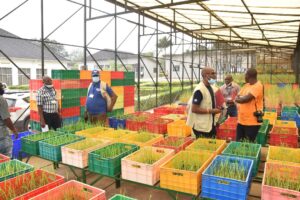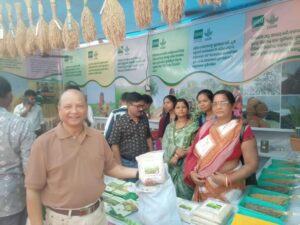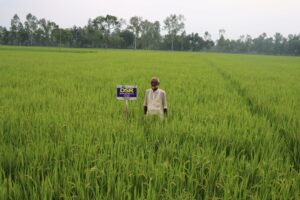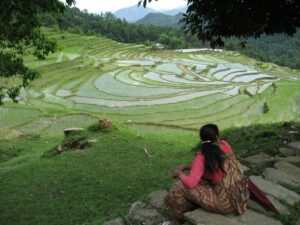by Waseem Hussain, Mahender Anumalla, Margaret Catolos, Joie Ramos, Ma. Teresa Sta. Cruz, and Myrtel Valenzuela
IRRI scientists are changing how rice is bred for stress-prone areas by shifting the focus from traits to environments. Their new approach, TTE, offers a faster, more reliable path to develop climate-resilient varieties.
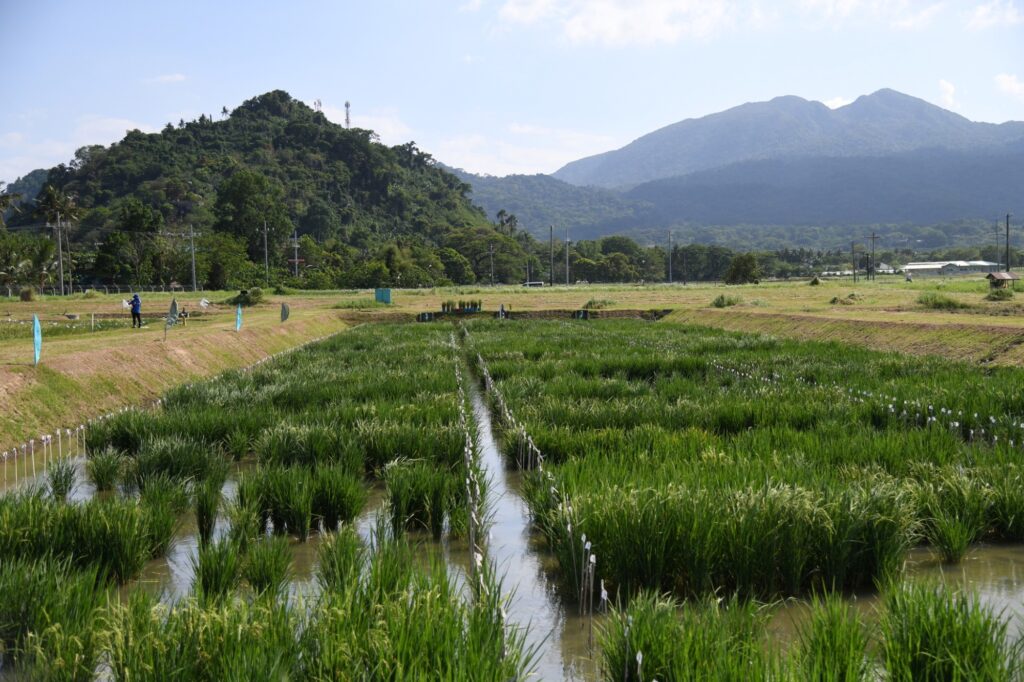
Scientists at the International Rice Research Institute (IRRI) are shifting the way rice is bred for difficult conditions like drought, salinity, and flooding. Their new approach, called “Transition from Trait to Environment (TTE)”, is changing how breeders think about stress tolerance, not as a trait to be added, but as the very environment where breeding decisions are made.
Traditional breeding methods often start with high-yielding varieties and attempt to add and select for abiotic stress tolerance later. TTE turns this process around. It starts with fixing the stress tolerance in the parental pool, giving breeders a strong foundation from the beginning. This shift improves the accuracy of selection and speeds up the development of varieties suited for challenging environments.
In places where rice farming is threatened by floodwaters or salt-invaded soils, even the best technologies can lose their edge. Genomic selection and population improvement often perform poorly in stressful environments. However, TTE holds steady, with IRRI breeders recording a 65% genetic gain in submergence tolerance in just one cycle. Trials with national partners also showed strong performance from TTE-developed lines in flood-prone areas.
Rethinking the Breeding Process
Conventional breeding for stress tolerance involves crossing elite lines with donor genotypes. The progenies derived from this crossing scheme segregate for the tolerance trait. The results in field are often uneven: some plants don’t survive due to a lack of tolerance, while others survive but yield little. A few shows promise, but the overall variation in the data makes it hard to make reliable selections and draw clear conclusions. This inconsistency and unreliability of results weakens the power of genomic predictions in predicting the genomic estimated breeding values (GEBVs).
Breeding Approach: From Trait to Environment

TTE begins with parents in which the tolerance for the abiotic stress trait has already been fixed, like lines that can withstand complete submergence. Instead of selecting for stress tolerance later, researchers build it from the start. The offspring of these crosses are tested directly under stress conditions.
As tolerance is already in place, breeders can shift their focus. They look at traits like yield, maturity, and grain quality, confident that the plants will survive the stress. This approach reduces noise in the data. With fewer unknowns, predictions become reliable, and the tools of genomic selection and population improvement work more effectively.
Strong base populations and strong data make genomic selection work in challenging environments. TTE strengthens both. As climate threats grow, this approach offers breeders a clearer way forward, one that meets the needs of farmers working on the edge of environmental extremes.
About the publication:
To know more about this new breeding approach, access the publication through Anumalla, M., et al. (2025). Future flooding-tolerant rice germplasm: Resilience afforded beyond Sub1A gene. The Plant Genome, 18(1), e70040. https://doi.org/10.1002/tpg2.70040

